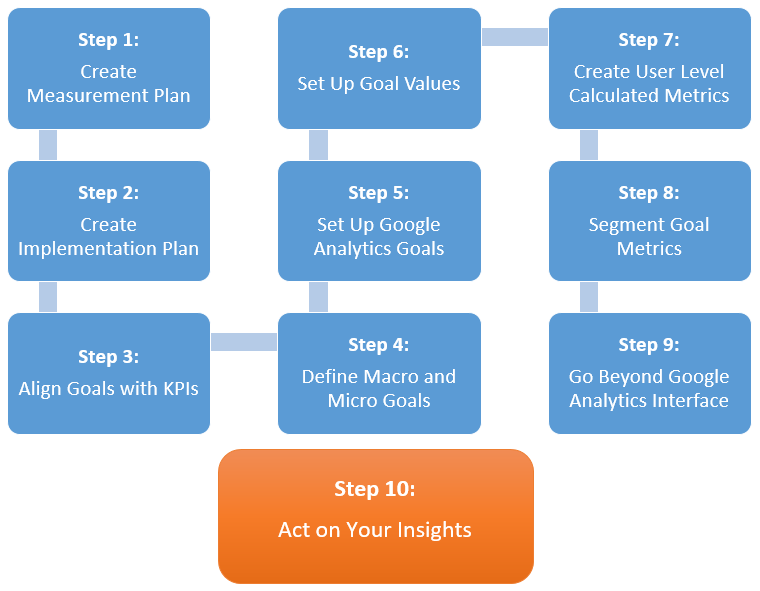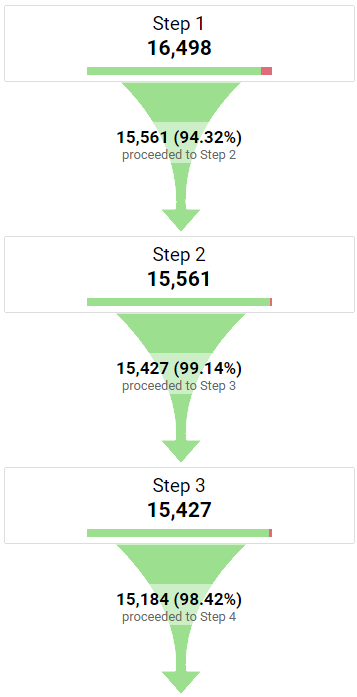What Data Is Google Analytics Goals Unable to Track and Why
Wiki Article
Unveiling the Blind Spots: Understanding What Google Analytics Goals Can not Measure
In the realm of electronic analytics, Google Analytics stands as an effective tool for monitoring and analyzing online customer communications. Understanding what Google Analytics objectives can not determine is vital for gaining a thorough view of user habits and engagement.Customer Habits on External Platforms
Recognizing how customers communicate on exterior platforms is important for enhancing on-line techniques. Exterior systems, such as social media sites networks, recommendation sites, and on-line discussion forums, play a substantial duty in driving traffic to a company's internet site. By examining customer actions on these systems, services can obtain useful understandings right into the performance of their advertising initiatives and the preferences of their target audience.One trick aspect of individual actions on external platforms is the recommendation resource. By tracking where the users are coming from, organizations can identify which platforms are driving one of the most traffic to their internet site. This information can assist business allot their resources better, focusing on the platforms that produce the most effective outcomes.

Offline Conversions and Interactions
Evaluating user habits on external systems supplies important understandings right into on the internet techniques; however, taking into consideration offline conversions and communications is equally important for a comprehensive understanding of a firm's general performance. Offline conversions, such as in-store acquisitions or phone inquiries, play a substantial function in many services' success.
Acknowledgment Beyond Last Click
When delving into the realm of electronic advertising and marketing analytics, it becomes important to look past the solitary touchpoint of the last click for a more extensive understanding of attribution. While Google Analytics supplies useful understandings into user habits, depending exclusively on last-click attribution can be restricting - what data is google analytics goals unable to track. Acknowledgment models that go beyond the last click use a much more nuanced sight of the customer trip, thinking about all the touchpoints that lead to a conversionAcknowledgment past the last click enables online marketers to designate credit to numerous communications along the conversion course, providing a clearer photo of the efficiency of various advertising and marketing networks. By checking out multi-touch attribution models read this such as straight, time degeneration, or position-based attribution, businesses can much better designate their advertising budgets and optimize their approaches for maximum impact.
Recognizing the impact of each touchpoint in the conversion process is crucial for making educated decisions and making the most of ROI. By welcoming acknowledgment beyond the last click, organizations can get deeper understandings into consumer habits and tailor their advertising and marketing initiatives better.
Cross-Device and Cross-Browser Monitoring

In a similar way, cross-browser monitoring complements cross-device tracking by recording customer habits as they switch between various web browsers. Comprehending just how users communicate with web sites on numerous internet browsers can help marketing professionals maximize their on-line experiences to make certain consistency and functionality across different platforms.
Qualitative Data and User Intent
Understanding individual intent through qualitative data analysis is important for establishing targeted electronic advertising and marketing approaches that reverberate with the demands and choices of the target market. Qualitative data offers insights into the 'why' behind user activities, losing light on inspirations, feelings, and preferences that quantitative data alone can not capture. By analyzing customer responses, remarks, and interactions, online marketers can uncover valuable information concerning customer intent, enabling them to tailor their messaging, content, and offerings to much better straighten with what their audience is seeking.Qualitative view publisher site information likewise assists in understanding the context in which customers involve with a site or app. This contextual understanding makes it possible for marketing professionals to produce more relevant and tailored experiences, eventually driving higher involvement and conversion prices. By delving right into individual intent through qualitative information analysis, businesses can get a deeper understanding of their target market, resulting in more reliable advertising strategies that satisfy users' demands and expectations.
Final Thought
To conclude, Google Analytics objectives have limitations in gauging user actions on external systems, offline conversions, attribution beyond last click, cross-device and cross-browser monitoring, and qualitative data associated with user intent. what data is google analytics goals unable to track. It is very important for businesses to be knowledgeable about these dead spots in order to supplement their data evaluation with various other devices and techniques to acquire a more extensive understanding of their audience and boost their general electronic marketing approachesBy analyzing individual actions on these systems, companies can obtain valuable insights into the efficiency of their advertising and marketing efforts and the preferences of their target audience.
Examining customer actions on exterior systems provides valuable insights into on the internet methods; nonetheless, thinking about try here offline conversions and interactions is similarly imperative for an extensive understanding of a business's general performance.In digital advertising analytics, relocating beyond last-click attribution to check out cross-device and cross-browser tracking is vital for getting an all natural understanding of customer communications throughout different platforms and gadgets. By evaluating individual feedback, comments, and interactions, online marketers can uncover important information about user intent, permitting them to customize their messaging, web content, and offerings to much better line up with what their audience is seeking.
By diving right into customer intent through qualitative information evaluation, services can get a deeper understanding of their target audience, leading to much more effective marketing strategies that satisfy individuals' demands and assumptions.
Report this wiki page